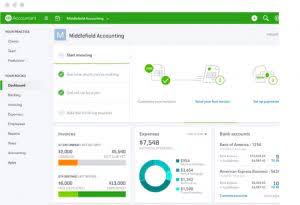
This stark example illustrates the domino effect that can result from over-reliance on a single source of income, especially in an industry where cash flow is the engine of daily operations. Instead of waiting to invoice clients until a project’s completion, progressive or milestone billing allows companies to receive payments as specific project stages are completed. This approach improves cash flow throughout the project, covering ongoing costs without requiring companies to front all expenses until the project ends. Therefore, current project managers must be trained in cash flow management or be hired as qualified project managers. Increasing cash flow in construction companies is possible through good project management and improving receivables’ speed.
How to Manage Cash Flow for Your Construction Company
Overestimating profitability and underestimating expenses create a distorted picture of the project’s true financial position. Underestimating the costs of materials or labor leaves businesses struggling to meet their obligations. Construction projects are multifaceted endeavors involving various parties, each with their own payment expectations and schedules. Research indicates that, on average, contractors wait an average of 90 days for payments, often referred to as Days Sales Outstanding. This delay between construction cash flow work completed and payment received is a major contributing factor to cash flow issues in the construction industry.

Developing Cash Flow Projections
Cash flow is crucial to running a construction business and acts as fuel to smoothly drive the engine of construction companies. From paying the workers to investing in the materials, lots of things depend on cash flow. Cash flow management refers to the process of monitoring, analyzing, and optimizing the flow Partnership Accounting of cash into and out of a business. It entails keeping a balance between the amount of money coming in from sources like sales, investments, and financing and the amount going out for costs like salaries, supplies, and loan repayments.
Construction Management Software

Furthermore, you can also offer training and incentives based on the performance of the cash flow of the company. Hence, efficient cash flow management is crucial for every construction company to succeed. This essay will examine practical methods for managing cash flow in the construction sector. Cash flow in construction is a common problem due to factors like long payment cycles, upfront expenses for materials and labor, and unexpected delays. Waiting 90 days for payment is commonplace for contractors, while they often must cover substantial initial costs. Managing your working capital, the difference between your current assets and current liabilities effectively is crucial for supporting smooth cash flow in construction.

- Our proprietary data shows it takes Buildertrend customers 42 days on average to get paid manually by check.
- Contractors must carefully manage their cash flow to cover operating activities while waiting for client payments.
- Most project managers do not realize that cash flow management plays an important role in ensuring the timely completion of projects.
- That way, you can make adjustments as needed throughout a construction project, instead of finding out at the very end that your project wasn’t profitable after all.
- Leveraging lien rights is a powerful legal tool that construction businesses possess to secure payment for their services.
On many jobs, a part of the agreed payment is intentionally kept back until most of the work is done. However, this held-back payment can sometimes cause money troubles for the contractor. Intersystems IRIS is online bookkeeping a (backend) data platform that sets a new level for the development and deployment of applications.

Strategic Financing and Working Capital Management
While profit signifies the surplus after subtracting expenses from revenue, cash flow focuses on the actual cash moving through the project. A construction project might show profitability on paper but suffer from cash flow issues if payments are delayed or expenses exceed the available cash. The analysis should review the project’s profitability, financial health, and operational efficiency. It also helps determine factors affecting project cash flow in construction and allows for better financial decision-making.
- This entails adhering to both local and federal laws that govern payment practices within the construction industry.
- This initial investment can create cash flow pressure, especially if a company lacks sufficient working capital.
- The combination of maintaining high fixed costs for leases and administrative personnel plus the increasing costs of employees, supplies, and raw materials made profitability seem all but impossible.
- The investing cash flow formula shows you how investments affect your cash flow over time.
- Finally, businesses generally look at both cash flow statements and cash flow projections.
Delayed Payments from Clients
To improve cash flow management, construction companies should bargain with suppliers or subcontractors for extended payment terms. To maintain these connections, they must also make timely payments to their suppliers and subcontractors. In this article, we have discussed the importance of cash flow management in construction and provided expert tips and strategies for success.
Green construction can involve utilizing energy-efficient equipment, implementing sustainable building practices, and using eco-friendly materials. While these measures might increase initial project costs, they often result in lower operational costs, increased property values, and potential tax benefits. Accurately forecasting and managing cash flow becomes paramount in such situations to ensure the project’s financial sustainability mirrors its environmental sustainability. This lag creates a gap where the contractor has to finance the ongoing work and meet regular expenses such as wages, materials, and equipment.
Making it easier for your customers to pay you, spreading out your payments for assets, and invoicing promptly are only a few of the things you can do to better manage your construction company’s cash flow. Finally, businesses generally look at both cash flow statements and cash flow projections. While a cash flow statement gives a good sense of how cash has been flowing in the past, cash flow projections provide an estimate of how cash flow will be in the future. By evaluating known (and expected) expenses and known (and expected) revenues, companies can determine where they may have upcoming cash flow shortfalls.


¿Quiéres participar en este debate?
Ve al apartado 'Cómo participar' y revisa los pasos necesarios para poder intervenir en los debates abiertos.